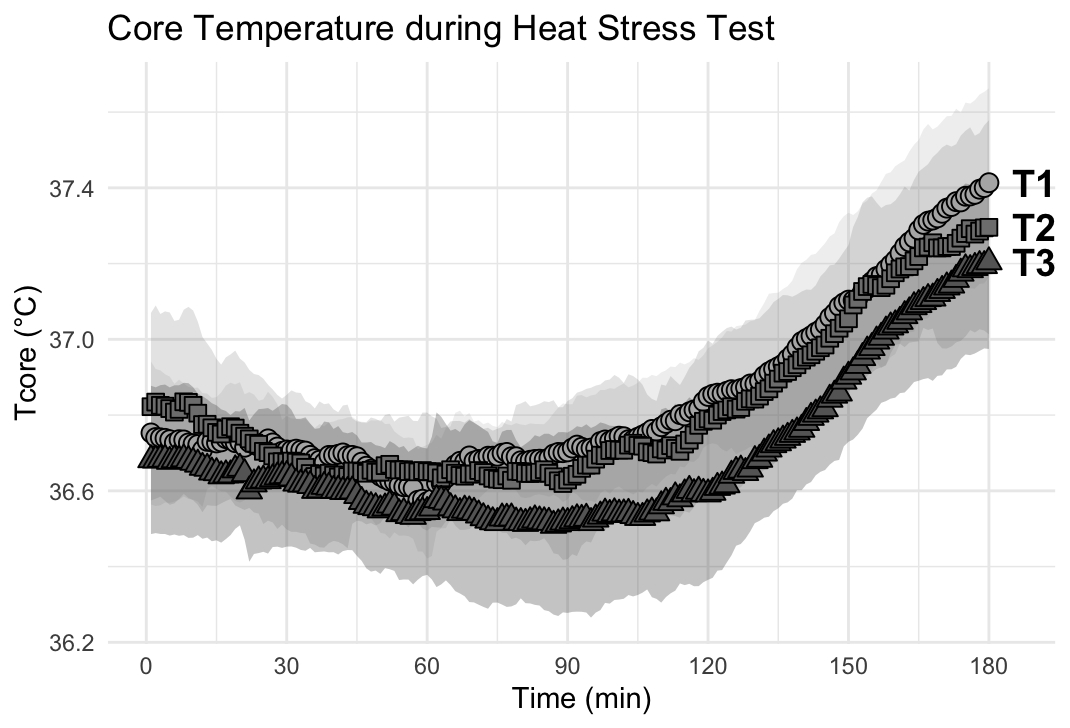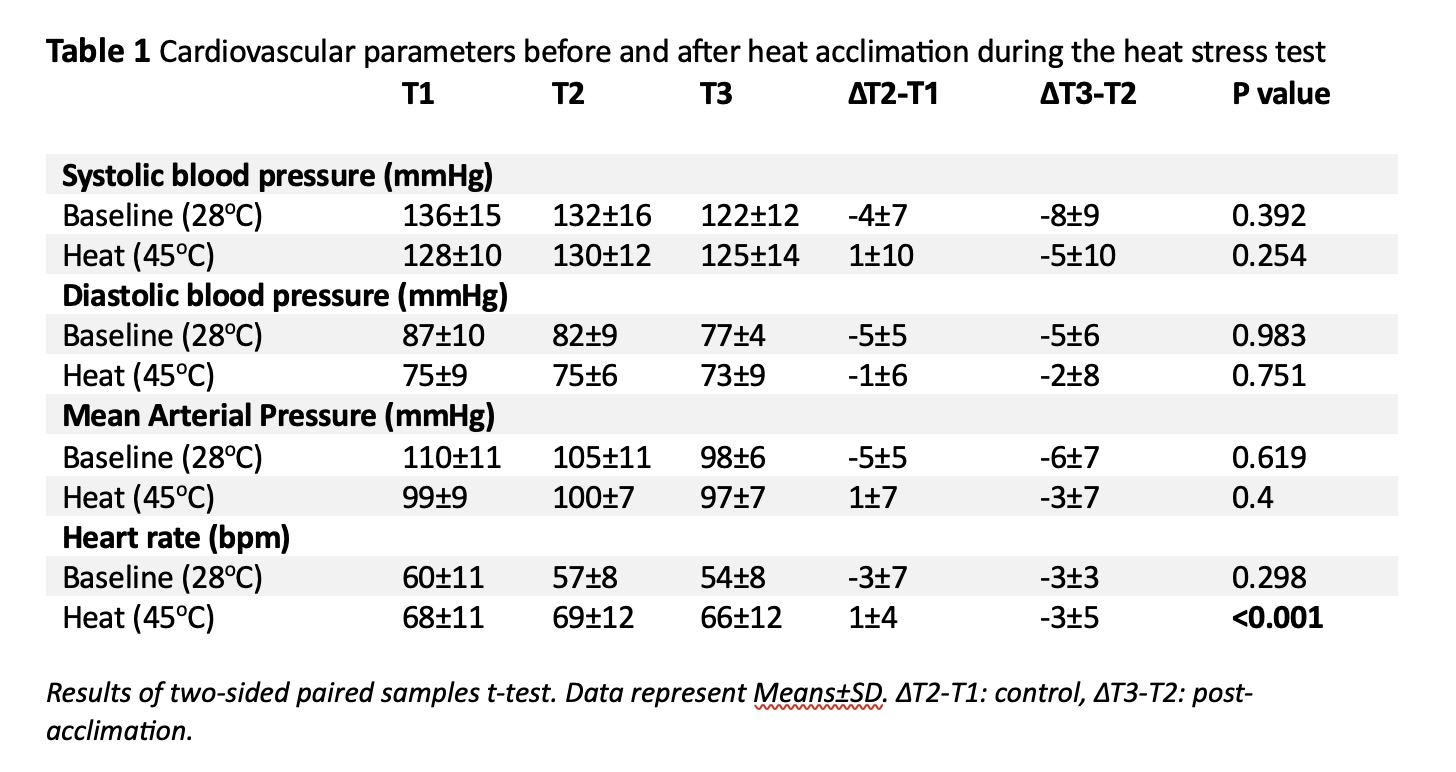Introduction: Climate change progresses and coincides with increasing prevalences of extreme heat events globally [1]. The threat for heat-related complications is particularly pronounced among vulnerable populations, such as older and overweight individuals [2]. Heat acclimation is known to enhance thermal resilience to heat stress and mitigate adverse effects [3]. Research has mostly focused on benefits of heat acclimation for exercise performance with protocols applying extreme temperatures and high-intensity exercise [4]. However, those protocols do not apply to a broader, especially heat-vulnerable populations. Previous work from our lab demonstrated that passive heat acclimation, despite the mild heat stimulus, enhanced resilience to heat in overweight older adults [5]. Aim: The present study builds on those results and aims to assess a combined passive and active heat acclimation approach, mimicking real-life outdoor temperature scenarios leading up to a heat wave, on thermophysiological and cardiovascular parameters in overweight adults between 60 and 80 years. Methods: The study was approved by the Medical Ethics Committee of MUMC+ and it was conducted in accordance with the principles outlined in the Declaration of Helsinki (Fortaleza, Brazil, 2013). 7 women and men (age 70±6 y, BMI 28.7±1.8 kg/m2) underwent one control week and one week of passive heat acclimation (6h/d, 29-35oC) in combination with low-to-moderate intensity exercise (30min/d cycling, 40% Wmax). Test days T1 and T2 were performed before and after the control week and T3 after the final acclimation day. Each test day consisted of 180-min incremental heat stress test (HST), during which participants were exposed to gradually increasing temperature (28-45oC). Participants arrived fasted in the morning of each test day and rested semi-nude in a recliner during the HST. Thermophysiological (core and skin temperature) and cardiovascular (heart rate, blood pressure) parameters were measured. For the comparison of the physiological variables, two time periods during HST were selected: baseline (28oC, 30-60 min) and heat (45oC, 150-180 min). Outcomes were analysed with two-sided paired t-test between control (∆T2-T1: pre acclimation) and after the intervention (∆T3-T2: post-acclimation). Data represent means±SD. Preliminary results: Changes in core temperatures averaged -0.01±0.19oC during baseline at control vs -0.07±0.21οC post-acclimation (P=0.01, Figure 1). During heat, changes in core temperatures averaged -0.06±0.24oC at control vs -0.13±0.18oC post-acclimation (P<0.021, Figure 1). Skin temperatures averaged 33.93±0.53οC and 33.77±0.45οC during baseline (28oC) pre acclimation vs 33.59±0.35oC post acclimation (P<0.001) and during heat (45oC) 37.15±0.44oC vs 37.04±0.38oC pre acclimation vs 37.04±0.37oC post acclimation (P=0.003). No significant changes were observed in systolic and diastolic blood pressure and mean arterial pressure at baseline (28oC) and during heat (45oC) (Table 1). Heat acclimation significantly decreased heart rate during heat (45oC; P<0.001), while no differences were detected during baseline (28oC; P=0.298, Table 1). Conclusions: Preliminary results show that 7 days of combined passive and active heat acclimation significantly enhanced thermoregulation and lowered heart rate during heat stress in older, overweight adults, suggesting a potential reduction of heat-health risks. Further analysis (for powered group size of n=10 participants) at the end of the study is needed to draw definitive conclusions.
Thermal Physiology in Health and Disease: Mechanisms and Therapeutic Applications (Brunel University of London, UK) (2025) Proc Physiol Soc 64, C15
Oral Communications: Heat wave ahead – combined passive and active heat acclimation to enhance thermal resilience and cardiovascular health in older, overweight adults
Sofia Pappa1, Guy Plasqui1, Wouter van Marken Lichtenbelt1, Peter Joris1, Hannah Pallubinsky1
1Department of Nutrition and Movement Sciences, Institute of Nutrition and Translational Research in Metabolism (NUTRIM), Maastricht University Netherlands
View other abstracts by:
Where applicable, experiments conform with Society ethical requirements.


